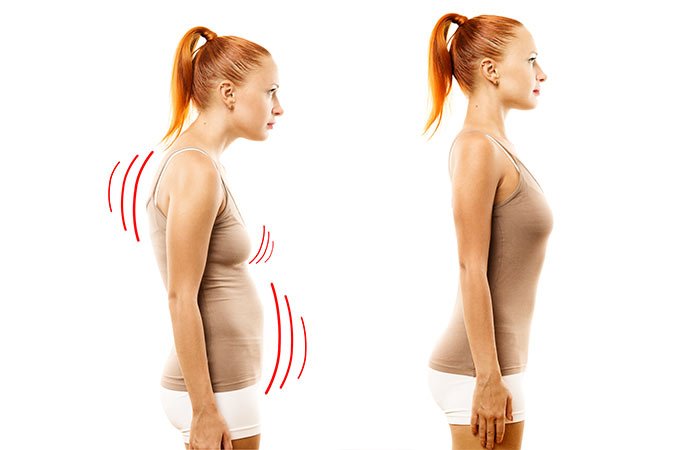Why is my mommy tummy so big?
Many new mothers wonder why their tummy seems bigger after having a baby. The “mommy tummy” or “mom pooch” is a common concern and can be attributed to various factors. During pregnancy, the abdominal muscles stretch to accommodate the growing fetus, and the connective tissue between the muscles can weaken, leading to a protrusion in the belly. Additionally, weight gain during pregnancy and the accumulation of excess fat can contribute to the size of the mommy tummy. Other factors such as excess skin from pregnancy, scar tissue from a cesarean section, and unhealthy habits like lack of physical activity and sugar cravings can further exacerbate the problem.
Key Takeaways:
- Mommy tummy is caused by factors such as muscle separation, fat gain, excess skin, and scar tissue.
- Pregnancy can stretch and weaken abdominal muscles, leading to a protrusion in the belly.
- Weight gain during pregnancy can contribute to the size of the mommy tummy.
- Lack of physical activity and sugar cravings can worsen the problem.
- Addressing the mommy tummy involves exercises to strengthen the core muscles, maintaining a balanced diet, staying hydrated, and giving the body time to recover.
Understanding Muscle Separation and Fat Gain
During pregnancy, your abdominal muscles stretch to accommodate the growing fetus, and this can cause a separation of the muscles. This condition is known as diastasis recti, and it can contribute to the size of your mommy tummy. The connective tissue between the abdominal muscles weakens, which leads to a protrusion in the belly. Additionally, weight gain during pregnancy can further increase the size of your postpartum belly.
Diastasis recti can be identified by a visible bulge or gap between the abdominal muscles, usually noticeable when you engage your core or perform certain movements. It’s important to understand that diastasis recti is not a permanent condition and can be addressed through specific exercises targeting the core muscles.
“Diastasis recti is not a permanent condition and can be addressed through specific exercises targeting the core muscles.”
When it comes to losing baby weight, focusing on overall weight loss through a combination of exercise and a balanced diet is essential. In order to reduce your mommy tummy, it’s important to incorporate exercises that specifically target the abdominal muscles and promote their strength and healing. These exercises can help close the gap between the muscles and tighten the tummy. Consulting with a healthcare professional or a specialized postnatal fitness instructor can provide guidance on the appropriate exercises for your individual situation.
| Exercises for Diastasis Recti | Instructions |
|---|---|
| 1. Pelvic Tilts | Lie on your back with knees bent. Tilt your pelvis up, engaging your core muscles. Hold for a few seconds and release. Repeat 10-15 times. |
| 2. Modified Planks | Start on your hands and knees, then lower down to your forearms. Keep your core engaged and hold for 20-30 seconds. Repeat 3-5 times. |
| 3. Leg Slides | Lie on your back with knees bent and feet flat on the floor. Slide one leg out while keeping your core engaged. Return to starting position and repeat with the other leg. Aim for 10-15 repetitions on each leg. |
“In order to reduce your mommy tummy, it’s important to incorporate exercises that specifically target the abdominal muscles and promote their strength and healing.”
In summary, understanding the factors contributing to a larger mommy tummy is crucial in finding effective strategies for reducing its size. Muscle separation, weight gain, excess skin, and scar tissue from a cesarean section all play a role in the appearance of a postpartum belly. By addressing these factors through targeted exercises, maintaining a balanced diet, and staying hydrated, you can work towards healing your mommy tummy and achieving a flatter abdomen. Remember to consult with a healthcare professional or a postnatal fitness instructor for personalized guidance and support on your postpartum journey.
Factors Contributing to a Mommy Tummy
Apart from muscle separation and weight gain, there are other factors that can contribute to the size of your mommy tummy. Excess skin is one such factor. During pregnancy, your skin stretches to accommodate the growing baby, and after giving birth, it may take time for the skin to regain its elasticity. This can result in loose or sagging skin around the abdomen, making your tummy appear larger.
“Sometimes, no matter how much you exercise or diet, excess skin can still be present,” says Dr. Sarah Thompson, a board-certified plastic surgeon.
“In such cases, a tummy tuck procedure can be considered to remove the excess skin and tighten the abdominal muscles to achieve a flatter and more toned appearance.”
Cesarean section deliveries can also impact the size of your mommy tummy. The abdominal muscles are cut during the procedure, and although they heal, they may not regain their previous strength. Additionally, scar tissue can form, further affecting muscle function and appearance. It is important to note that it is normal for the scar tissue to feel firm or lumpy, and it usually becomes less noticeable over time.
Sugar cravings and lack of physical activity can contribute to a larger postpartum belly. Pregnancy hormones, changes in metabolism, and the stress of caring for a newborn can all contribute to cravings for sugary foods. Consuming excessive amounts of sugar can lead to weight gain and an increase in belly fat. Lack of physical activity can also contribute to weight gain and weaken the abdominal muscles, leading to a larger tummy.
| Factors Contributing to a Mommy Tummy | Effects |
|---|---|
| Excess skin | Loose or sagging skin, making the tummy appear larger |
| Cesarean section | Weakened abdominal muscles, scar tissue formation |
| Sugar cravings | Weight gain, increase in belly fat |
| Lack of physical activity | Weakened abdominal muscles, weight gain |
Addressing these factors requires a holistic approach. Along with exercises that target the core muscles, incorporating a balanced diet is essential for losing weight and reducing the mommy tummy. Staying hydrated is also crucial for overall health and aiding in postpartum recovery. If you choose to use binding or postpartum belly support garments, ensure that it doesn’t worsen any existing pelvic organ prolapse, as this can be harmful.
Healing Your Mommy Tummy Through Exercise
Engaging in targeted exercises can be instrumental in healing your mommy tummy and restoring core strength. By incorporating specific exercises into your routine, you can effectively reduce the size of your postpartum belly and improve your overall abdominal tone. Here are some exercises that can help tighten your tummy and address diastasis recti:
- Planks: Start by getting into a push-up position, resting your forearms on the ground. Keep your body in a straight line from head to toe, engaging your core muscles. Hold this position for 30 seconds to a minute, gradually increasing the duration as you get stronger. Planks help strengthen your entire core, including the abdominal muscles, and can be modified to accommodate different fitness levels.
- Reverse Crunches: Lie flat on your back with your knees bent and feet flat on the ground. Place your hands on the floor, palms facing down. Lift your legs and hips off the ground, bringing your knees towards your chest. Slowly lower your legs back down to the starting position. Repeat this movement for 10-15 repetitions, focusing on engaging your lower abs.
- Side Planks: Start by lying on your side with your legs extended and stacked on top of each other. Prop yourself up on your forearm, keeping your elbow directly under your shoulder. Lift your hips off the ground, forming a straight line from head to toe. Hold this position for 30 seconds to a minute, then switch sides. Side planks target the oblique muscles, which help tighten the waistline.
Remember to listen to your body and start with exercises that are suitable for your fitness level. If you have diastasis recti, it is important to avoid exercises that can further separate the abdominal muscles, such as sit-ups or traditional crunches. Consult with a healthcare professional or a postnatal exercise specialist for personalized guidance and modifications.
Summing Up
Targeted exercises can play a significant role in reducing your mommy tummy and improving core strength after pregnancy. Planks, reverse crunches, and side planks are effective exercises that specifically target the abdominal muscles and can help tighten your tummy. Remember to start slowly, focus on proper form, and gradually increase the intensity and duration of your workouts as your strength improves. Complementing your exercise routine with a balanced diet and staying hydrated will further support your postpartum recovery and help shape your body. Give yourself time and patience as you work towards a flatter postpartum belly and a stronger core.
Maintaining a Balanced Diet for Mommy Tummy Reduction
A balanced diet plays a crucial role in shedding baby weight and achieving a smaller mommy tummy. By nourishing your body with the right nutrients, you can support your postpartum recovery and shape your body after pregnancy. Here are some key tips to help you maintain a balanced diet and reach your goals:
- Focus on whole, nutrient-dense foods: Choose foods that are rich in vitamins, minerals, and fiber, such as fruits, vegetables, whole grains, lean proteins, and healthy fats. These foods will provide your body with the necessary nutrients for recovery and help you feel satisfied.
- Control portion sizes: Pay attention to your portion sizes to avoid overeating. Use smaller plates and bowls, and listen to your body’s hunger and fullness cues. Eating mindfully can help you enjoy your meals while keeping portions in check.
- Avoid empty calories: Minimize your intake of sugary drinks, processed snacks, and foods high in added sugars and unhealthy fats. These empty calories can contribute to weight gain and hinder your progress in reducing the mommy tummy.
- Stay hydrated: Drink plenty of water throughout the day to support your overall health and digestion. Adequate hydration can also help reduce bloating and promote a healthier appearance.
- Include breastfeeding-friendly foods: If you’re breastfeeding, incorporate foods that support milk production and provide essential nutrients. Examples include leafy greens, whole grains, lean proteins, and healthy fats like avocados and nuts.
Remember, postpartum recovery is a gradual process, and it’s essential to be patient with yourself. Consult with a healthcare professional or a registered dietitian who specializes in postpartum nutrition to create a personalized plan that suits your needs and goals.
| Nutrient | Sources |
|---|---|
| Iron | Lean red meat, beans, spinach, fortified cereals |
| Calcium | Dairy products, fortified non-dairy alternatives, leafy greens |
| Protein | Lean meats, poultry, fish, eggs, legumes, tofu |
| Fiber | Whole grains, fruits, vegetables, legumes, nuts and seeds |
| Healthy fats | Avocado, olive oil, nuts, seeds, fatty fish |
“A balanced diet is key to nourishing your body and achieving a smaller mommy tummy. Focus on whole, nutrient-dense foods, control your portion sizes, and avoid empty calories. Stay hydrated and include breastfeeding-friendly foods if applicable. Remember to be patient with yourself and seek professional guidance if needed.” – [Your Name]
Other Strategies for Mommy Tummy Reduction
Besides exercise and diet, there are other strategies you can incorporate to reduce the size of your mommy tummy. These additional approaches can complement your core exercises and healthy eating habits, helping you achieve optimal results in your postpartum journey.
Hydration
Staying hydrated is essential for overall health and can also aid in reducing your mommy tummy. Drinking an adequate amount of water throughout the day helps flush out toxins and promotes proper digestion. Aim to consume at least eight glasses of water daily, and consider infused water or herbal teas for added flavor and benefits. Remember, being well-hydrated not only supports your postpartum recovery but also contributes to the overall appearance and well-being of your body.
Postpartum Belly Support
Another effective strategy to consider for mommy tummy reduction is the use of postpartum belly support garments. These specially designed belly bands or wraps offer gentle compression and support to the abdominal muscles, helping to tighten and tone your post-baby belly. They can also provide additional back support, improve posture, and alleviate any postpartum discomfort. However, it is important to consult with your healthcare provider before using any belly support garment to ensure it is safe and suitable for your specific needs.
Binding and Pelvic Organ Prolapse
While binding can provide support for your mommy tummy, it is crucial to avoid binding if you have a pelvic organ prolapse. The pressure exerted by the binding can worsen this condition. If you are experiencing any symptoms of pelvic organ prolapse, such as pelvic pressure or discomfort, it is essential to seek medical advice. Your healthcare provider can guide you on appropriate strategies and treatments to manage and improve the condition.
| Strategies for Mommy Tummy Reduction: |
|---|
| – Incorporate core-strengthening exercises |
| – Maintain a balanced diet |
| – Stay hydrated with water and herbal teas |
| – Use postpartum belly support garments for gentle compression |
| – Avoid binding if you have a pelvic organ prolapse |
Conclusion
By addressing the underlying factors and adopting a comprehensive approach, you can make progress in reducing your mommy tummy and regaining your pre-pregnancy shape. The mommy tummy, also known as the mommy pooch, is caused by a combination of factors such as muscle separation, fat gain, excess skin, and scar tissue from a cesarean section. During pregnancy, the abdominal muscles stretch to accommodate the growing fetus, leading to a protrusion in the belly. Extra weight gain during pregnancy can also contribute to the size of the mommy tummy.
However, with the right strategies, you can begin to heal your mommy tummy. Strengthening the core muscles through exercises is crucial in reducing the size of your postpartum belly. By incorporating specific exercises targeted at tummy tightening and addressing diastasis recti, you can gradually restore strength and tone to your abdominal muscles.
In addition to exercises, maintaining a balanced diet is essential in losing baby weight and reducing your mommy tummy. Nourishing your body with the right nutrients, practicing good portion control, and making healthy food choices can support your postpartum recovery and shape your body after pregnancy.
Remember to stay hydrated for overall health and postpartum recovery. Additionally, consider using binding or postpartum belly support garments to provide extra support for your abdominal muscles. However, it is important to avoid binding if you have a pelvic organ prolapse, as it can worsen the condition.
With patience, dedication, and a multi-faceted approach, you can work towards achieving a flatter postpartum belly and improving your overall health and well-being. Embrace your journey, listen to your body, and seek guidance from healthcare professionals if needed. You have the power to regain your confidence and feel great in your post-baby body!
FAQ
Q: Why is my mommy tummy so big?
A: Your mommy tummy may be larger due to factors such as muscle separation, fat gain, excess skin, and scar tissue from a cesarean section. These changes occur during pregnancy and can contribute to a protrusion in the belly. Additionally, weight gain during pregnancy and a lack of physical activity can further exacerbate the size of your postpartum belly.
Q: What is muscle separation and how does it contribute to a mommy tummy?
A: Muscle separation, also known as diastasis recti, occurs when the abdominal muscles stretch and weaken during pregnancy. This can lead to a separation of the muscles and a protrusion in the belly. Addressing diastasis recti through targeted exercises can help reduce the size of your mommy tummy and strengthen your core muscles.
Q: How does excess skin and scar tissue from a cesarean section contribute to a mommy tummy?
A: Excess skin from pregnancy can make your tummy appear larger. Additionally, scar tissue from a cesarean section can affect the function of the abdominal muscles and contribute to the size of your postpartum belly. Incorporating exercises and other strategies to support healing and minimize scar tissue can help reduce the mommy tummy.
Q: Can binding help reduce the size of my mommy tummy?
A: Binding can provide support for your abdominal muscles, but it is important to avoid binding if there is a pelvic organ prolapse. Binding should be used cautiously and under the guidance of a healthcare professional. It is best to focus on exercises, a balanced diet, and other strategies for reducing your mommy tummy.
Q: How can I heal my mommy tummy through exercise?
A: Healing your mommy tummy involves strengthening your core muscles through targeted exercises. Specific exercises that focus on tummy tightening and addressing diastasis recti can help reduce the size of your postpartum belly. It is important to consult with a healthcare professional or a postpartum exercise specialist to ensure you are performing the exercises correctly and safely.
Q: What role does diet play in reducing my mommy tummy?
A: Maintaining a balanced diet is crucial for losing baby weight and reducing your mommy tummy. Eating nutritious foods, controlling portion sizes, and avoiding excessive sugar can support your postpartum recovery and help shape your body after pregnancy. Consult with a registered dietitian or nutritionist for personalized dietary recommendations.
Q: Are there any other strategies I can use to reduce my mommy tummy?
A: In addition to exercise and a balanced diet, staying hydrated is important for overall health and postpartum recovery. Drinking enough water can help support your body’s healing processes. Some women find postpartum belly support garments helpful in providing extra support for their abdominal muscles. However, it’s essential to avoid binding if there is a pelvic organ prolapse.







